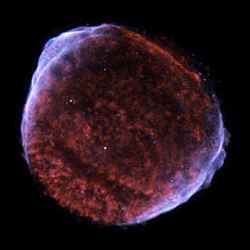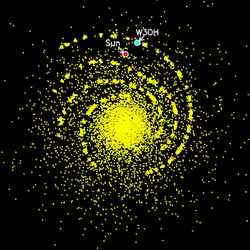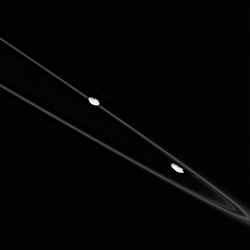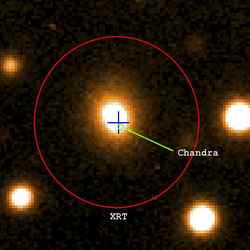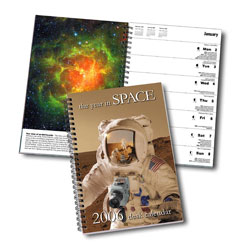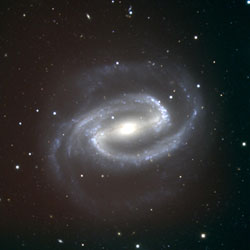
NGC 1300. Image credit: Hilary Mathis/NOAO/AURA/NSF. Click to enlarge.
Monday, December 19 – ‘Tis the season for freezin’, but you won’t be cold for long as you head towards the furnace of Fornax to discover one of the most awesome structured galaxies around – NGC 1300.
Located about a fistwidth north-northeast of Alpha Fornacis in the constellation of Eridanus, NGC 1300 is definitely one of the best barred spiral galaxies that can be viewed with the average telescope. Cataloged and studied by both Herschels, just the central bar in this 75 million light year distant beauty is larger in diameter than our own Milky Way – it spans an incredible 150,000 light years. As a topic of scientific study, the speed at which NGC 1300’s clouds of gas and stars rotate has been measured to help understand how this type of galaxy forms.
Easily reached by small telescopes, this 10th magnitude galactic giant will reveal its bright core area and the beginnings of resolution to larger aperture. No matter which hemisphere you observe from, this hot galaxy is definitely very “cool!”
Tuesday, December 20 – Tonight is the peak of Delta Arietid meteor shower. While most showers are best after midnight, this is a both hemispheres, early evening shower that must be viewed before the radiant sets. The fall rate is modest – about 12 per hour – but with early evening dark skies, your chance of success is good.
Today marks the founding of the Mt. Wilson Solar Observatory, which officially opened its doors in 1904. We also celebrate the birth of Walter S. Adams on this date. Born in 1876, Adams was an astronomer at Mt. Wilson who revealed the nature of Sirius B, the first known white dwarf star. Sirius B was first seen by Alvan Clark in 1862 abd hust recently, the Hubble Space Telescope precisely measured the mass of B for the first time.
While Sirius is far too low at an early hour to study its white dwarf, we can have a look at a similar star when we view Omicron 2 Eridani located roughly a handspan west of Rigel. As the southernmost of the Omicron pair, it is sometimes known as 40 Eridani and you’ll find it to be an interesting multiple star system that’s very worthy of your time.
Discovered by William Herschel in 1783, this 16 light year distant system is the eighth nearest of the unaided visible stars. Well spaced from the primary, the companion star is also a double for high powers and will reveal a red dwarf discovered by Otto Struve. Now, look closely at the 9th magnitude B star. This is the only white dwarf that can be considered “easy” for the backyard telescope. Its diameter is only about twice the size of Earth and its mass is about that of our Sun. Power up and locate the 11th magnitude companion…for it’s one of the least massive stars known!
Wednesday, December 21 – Today marks the official beginning of winter for the northern hemisphere. For the USA at 1:35 p.m. EST, the Sun will stand directly over the Tropic of Capricorn and meet its most southern extension. This time of solstice is also a good time to create your own shadow marker, so you may follow as the Sun changes positions in the sky. Anything can be used as a marker – be it a fencepost or simply a stake driven into the ground. At local noon, measure the distance between your marker and the end of the shadow. Every so often, repeat the process and watch the changes in shadow length in the weeks ahead!
Tonight let’s have a look at an open cluster best suited to binoculars or telescopes at very low power – Collinder 62. Located about two fingerwidths south of Alpha Auriga – Capella – this scattered collection of mixed magnitude stars is often overlooked in favor of the Messier objects. While its small groupings of roughly 8th magnitude stars occupy an area about the size of the full Moon, it fares well under tonight’s darker skies. Be sure to look for its brightest member in a zig-zag formation of stars.
Thursday, December 22 – Up early? Fantastic! In the pre-dawn hours of this morning, we have a treat for you – the Ursid meteor shower. Cruising around the Sun about every thirteen and a half years, Comet 8P/Tuttle sheds a little skin. Although it never passes inside of Earth’s orbit, some six years later we pass through its debris stream. Not so unusual? Then think again, because it takes as much as six centuries before any one meteoroid’s orbit is affected enough by Jupiter’s gravitation to pass into our atmosphere.
With only a little interference from the Moon while watching this northern circumpolar meteor shower, the hours before dawn could see activity of up to 12 per hour. By keeping watch on the constellation of Ursa Major, you just might spot one of these slow moving, 600 year old travelers that make their path only halfway between us and Selene!
While you’re out, be sure to have a look at Jupiter and see if you can spot Mercury as well. You’ll find the swift inner planet around a handspan and a half further east along the ecliptic plane. Don’t confuse it with the lower Antares!
Friday, December 23 – This will be a morning worth getting up early for – as almost all of the North American continent will be treated to an event when the Moon occults Beta Virginis. Be sure to check this IOTA page for a listing of times and locations in your area. Best of luck!
After sunset tonight, be sure to have a look at the rapidly slimming crescent of Venus. At this time, its orbital track is carrying it past the Earth and it will begin its “retrograde” – or reverse – motion as it heads off on its journey around the Sun.
Today in 1672, astronomer Giovanni Cassini discovered Saturn’s moon Rhea. Around four hours after local sunset you’ll find Saturn rising along the ecliptic plane and becoming more accessible to view. While a small telescope can easily resolve the largest satellite Titan, you can also see Tethys, Rhea and Dione in aperture as small as 4″. The clue is to watch carefully along the boundaries of the ring system. These moons stay in close and with good conditions you can catch their “wink” easily!
Saturday, December 24 – ‘Twas the night before Christmas and all through the house, not a creature was stirring…except for the mouse with the telescope who wants to see a multiple star system! Why don’t we join him tonight and have a look at very nice, and easily resolved, Sigma Orionis.
This particular system is easily found without a map. By identifying the three “belt” stars of Orion, go to the easternmost – Alnitak. Sigma is the first star south of it. In the telescope you will find a beautiful combination of four stars. The 3.8 magnitude white primary commands attention. With a designation of “A/B,” this super-massive and extremely bright pair is far too close (about 100 AU apart) to be split with a small scope. Looking 11″ to the southwest, you will discover the 10th magnitude white “C” star and you will see the 7.2 magnitude red “D” star 13″ to the east. Further away yet at a distance of 42″ to the east-northeast is the 6.5 magnitude blue “E” star.
Sharp-eyed observers will also note another multiple system in the same field of view to the northwest. This is Struve 761. As an “all white” system of similar magnitudes, you will see two residing east/west of each other and the third companion to the north. What we are looking at is a system that is about 1,500 light years away from us in the rich, star-forming region of Orion. Give that mouse a piece of cheese!
And even if that mouse just has a pair of binoculars, it’s in for another treat tonight as a great opportunity arises for binocular and small scope users to locate bright asteroid Vesta. Around 9:00 p.m. local time, look for the constellation of Gemini rising and identify bright Pollux – the southeastern of the pair. A little less than a fistwidth to the southwest of Pollux you will see Delta Geminorum at the “waist” of Gemini. Aim there and you will find Vesta very close to Delta! For accurate locator charts, be sure to visit Heavens-Above.
Today in 1968 Apollo 8 became the first manned spacecraft to orbit the Moon. If you should be out when the Moon rises, have a look at its beautiful cold surface for features we often see during the waxing phases – the fantastic Copernicus and the peaceful Sinus Iridum.
Sunday, December 25 – For a huge portion of the United States and Canada, this will be a Christmas morning to remember as the Moon will occult bright Spica in the hours before dawn! Please take the time to check this IOTA information page for the precise path locations and times in your area. May the morning bring you clear skies!
Like a present, Sir Isaac Newton was born on this day 1642 – Newton was the British “inventor” of calculus and a huge amount of what we now consider classical physics. Even young children are aware of his simple laws of motion and gravity. It wasn’t until the age of Einstein that things changed!
In keeping with the season, tonight’s astronomical object is a celebration of both starlight and asterism. Located 10 degrees east of Betelgeuse, NGC 2264 will be a challenging object. But thanks to the late rise of the Moon, the results will be quite worth it. Also known as “the Christmas Tree” cluster, this asterism of approximately 20 bright stars and over 100 fainter ones is embroiled in a faint nebula that will be lost to smaller scopes and binoculars, leaving only the delightful “Christmas Tree” shape adorned with stars.
The very brightest of these stars, S Monoceros, is fifth magnitude and will show clearly in the finderscope and as a double at magnification. Steady skies will reveal that the “star” at the top of our “tree” is also a visual double and home to the beautiful “Cone Nebula!” Many of the stars will also appear to have companions, as well as tints of silver and gold. The visual effect of this splendid open cluster is well worth the challenge it presents.
Thank you all for such a spectacular year. Here’s wishing everyone the most joyous of holiday seasons! Light speed… ~Tammy Plotner



